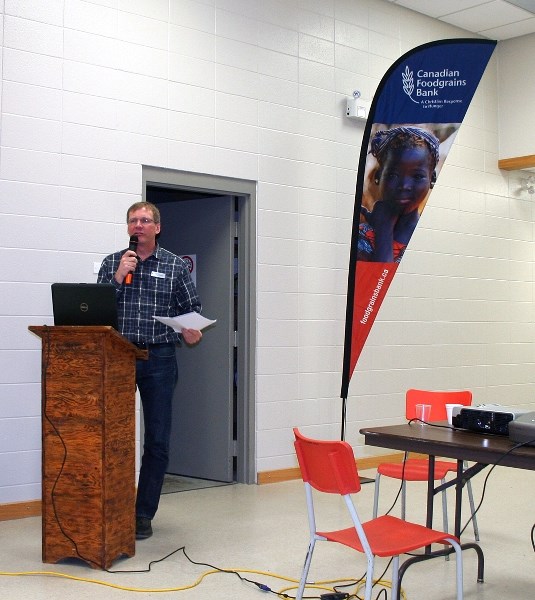Supporters and members of the Acres of Hope Growing Project celebrated the growth and continuation of the organization’s aid efforts to those in need, on April 2.
Guests gathered at the St. Lina Community Centre for dinner and the 2014 project launch featuring speeches from Terence Barg, the regional coordinator for Alberta with the Canadian Foodgrains Bank, and Don Katerynych, the secretary for the local Acres of Hope group.
Katerynych discussed his trip to Ethiopia to see the progress made over the last year, in relation to the local support by farmers in the Lakeland area.
His speech was accompanied by a series of slides depicting the areas he visited in Ethiopia, which included the capital city, Addis Ababa. Katerynych’s slides also showed the progress made with the main project and focus of Acres of Hope, an irrigation and sustainability project being done in the Afar Region.
Katerynych gave some background and context on the country saying, “It’s three fourths the size of Alberta and Saskatchewan combined, and landlocked. They have a population of 95 million people and a GDP one tenth the size of Alberta’s.”
Katerynych’s slideshow also showed the living conditions in Ethiopia. He emphasized how difficult the lives for Ethiopian people are, with high levels of poverty, and people living in accommodations like huts with dirt floors.
Katerynych told the audience about the prominence and importance of teff, a nutritious staple grain grown widely in Ethiopian agricultural practice. He emphasized how vital water was to any kind of agriculture, with much of Ethiopia’s land being susceptible to drought.
In terms of progress, Katerynych showed what measures are being put into place in the Afar Region, to curb drought and erosion, so that agriculturally feasible land can be maintained.
“A transformation happened,” said Katerynych, describing the plants and land used for soil retention and to prevent erosion. He noted the effectiveness of water canals, reservoirs, and dykes constructed to preserve water for irrigation.
“Animals have come back to graze, people have come back from the city to work. They’re introducing bees, and the crime rate is going down in the area, because people are working,” he said. “Half the project is training people how to establish new kinds of plants for continual growth in the region.”
Barg described Acres of Hope as one of the few organizations that directly supports people overseas, with progress that can be seen by those participating in Alberta.
“You are one of 34 projects in the province, and out of 200 from across Canada. Your contributions range from a few acres of land to grow food to around 500 acres. You can see why Don was encouraged by the work in Ethiopia, knowing we are tied directly to that,” said Barg.
In his speech, Barg mentioned that Acres of Hope receives $25 million in funding from the Canadian Government every year, and in December of 2013, it were funded with an additional $6.5 million for the work being done to help Syrian refugees displaced into Lebanon and Jordan.
“We’re helping the people . . . to rely on themselves and produce food, and also working with Syrian refugees. When we hear about that in the news, often we don’t pay attention, but 40 per cent of the population is in need of immediate humanitarian assistance,” said Barg.
Millions of Syrian citizens have no access to basic food and amenities, even in refugee camps, and are in desperate circumstances, he said. The Canadian Foodgrains Bank is providing basic food, a voucher program for food, and in some cases shelter for those in need.
“The crowd attendance was higher than I expected,” said Katerynych after the speeches. “We have an enthusiastic group for our project, and a real sense of coordination people interested in development.”
He added, “One farmer’s interested in adding acres to the area where he grows for the project. I’m also encouraged to see all the young people coming here to learn about the Canadian Foodgrains Bank and development.”



